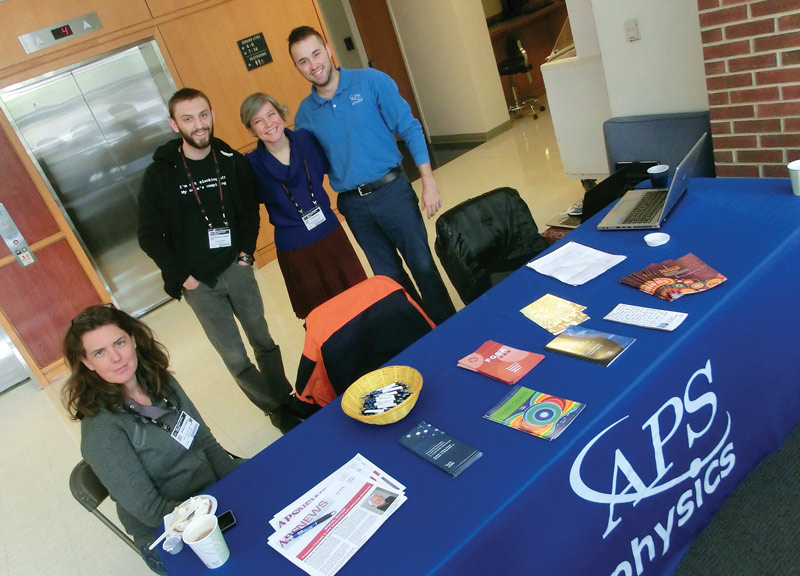Inaugural meeting of the Mid-Atlantic section of the American Physical Society
Meeting of the Mid-Atlantic Section of the APS
October 3, 2014 to October 5, 2014
Philadelphia, PA
Meeting host: By:Matthew Parsons
SPS Chapter:

“We exist as a section!” These were the words spoken to the crowd at the opening talk of the inaugural meeting of the Mid-Atlantic Section (M-AS) of the American Physical Society (APS). The newly formedsection was gathering together for the very first time!
The meeting’s agenda was packed with a variety of exciting activities, from tours of the university’s research facilities to a plenary presentation given by a Nobel laureate from the region.
Upon arriving on Penn State’s campus, where the meeting was held, my first stop was a tour of the university’s nuclear reactor. This was an awesome experience because you can actually look at the fissioning core in the water of the pool-type reactor and see the blue glow of Cherenkov radiation coming from it. Although the reactor operates at a low power (about 1 MW, compared to 1,500 MW for a typical commercial-power-generating reactor), it creates a high neutron flux used for various materials characterization techniques.
The meeting also included many sessions of contributed talks. I gave a presentation on work that I am doing at the Princeton Plasma Physics Laboratory in Plainsboro Township, New Jersey. My computational research involves simulating the movement of plasma inside of the lab’s experimental fusion device. As I compare the results to actual measurements, I look for differences between theory and experiment.
It was a meeting full of affirmation. At a panel discussion on industrial careers for physicists, retired IBM researcher Paul Grant told the audience, “We physicists can do anything. That’s the great part about our education.”
That evening, some other students and I sat down to dinner with Dr. Grant and talked about everything from quantum computing to the etymology of the English language. When you’re surrounded by physicists, there is never a dull moment!
Dan Vergano, reporter for National Geographic, spoke at the meeting about communicating science to the public. “People don’t just want facts about what’s happening in science,” he told us. “They want to hear a story about what’s going on.” His personal tips included the advice to share science news on Facebook.
On the final day of the meeting, I spent the morning at a session on physics education. I believe that an understanding of teaching pedagogy makes one not only a better teacher and communicator, but a better student as well. The audience was reminded that unless you build up concepts from a foundation that a student already has, in the end he or she won’t really have learned anything. Whether you are leading a recitation, conducting public outreach, or trying to digest the lecture that you just sat through, this is an important point to keep in mind.
Dig deeper
The newly formed Mid-Atlantic Section of the American Physical Society includes the District of Columbia, Delaware, Maryland, New Jersey, Pennsylvania, and West Virginia. APS currently has ten regional sections. To find out what is happening in your part of the country, visit www.aps.org/membership/units/sectionmap.cfm.
